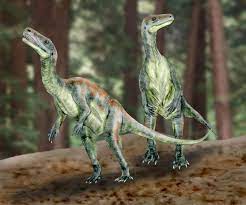
Guaibasaurus Dinosaur is a small dinosaur that lived during the Late Triassic period, approximately 227 to 208 million years ago. It is most commonly found in the beds of the Santa Maria Formation in Brazil. It was first discovered in 1990 and was given the name Guaibasaurus after the region in which it was found, Guaibas. It was initially classified as a basal theropod, though recent studies have suggested that it might be more closely related to Eoraptor, a basal saurischian dinosaur.
Guaibasaurus was a small dinosaur, measuring about 1 meter in length and weighing approximately 20 kilograms. Its skull was small and triangular, with prominent temporal fenestrae and robust jaw muscles. It is believed to have had four teeth on each side of its upper jaw, and seven on each side of its lower jaw. Its teeth were fittingly designed to bite down on small insects and other food sources. In terms of body composition, Guaibasaurus had a fully ossified axial skeleton, with an elongated neck and small ribs. Its forelimbs were small and stubby, while its hindlimbs were longer and well-developed.
Guaibasaurus Facts :
| Name: | Guaibasaurus Dinosaurs |
| Size: | 1 meter |
| Main Facts: | Due to its small size, Guaibasaurus was likely an omnivore, feeding on a variety of small animals and plants. |
Its diet likely included insects, fruits, and small animals, which it could have obtained by scavenging or hunting. Despite its small size, Guaibasaurus was believed to be an important part of the late Triassic ecosystem. It likely played a vital role in keeping the environment in balance, preying on small animal pests, as well as providing food for larger predators. Studies have also suggested that it may have been an important disperser of plants, as its small size would have allowed it to carry nutrients to different areas of the environment, promoting the growth of different plants.
However, recent studies have indicated that it may have traveled in small groups for protection or for mating purposes. It played a key role in keeping the environment in balance by dispersing nutrients, preying on small animal pests, and providing food for larger predators. Furthermore, recent studies have indicated that it may have traveled in small groups, adding to the complexity of this small but fascinating dinosaur.